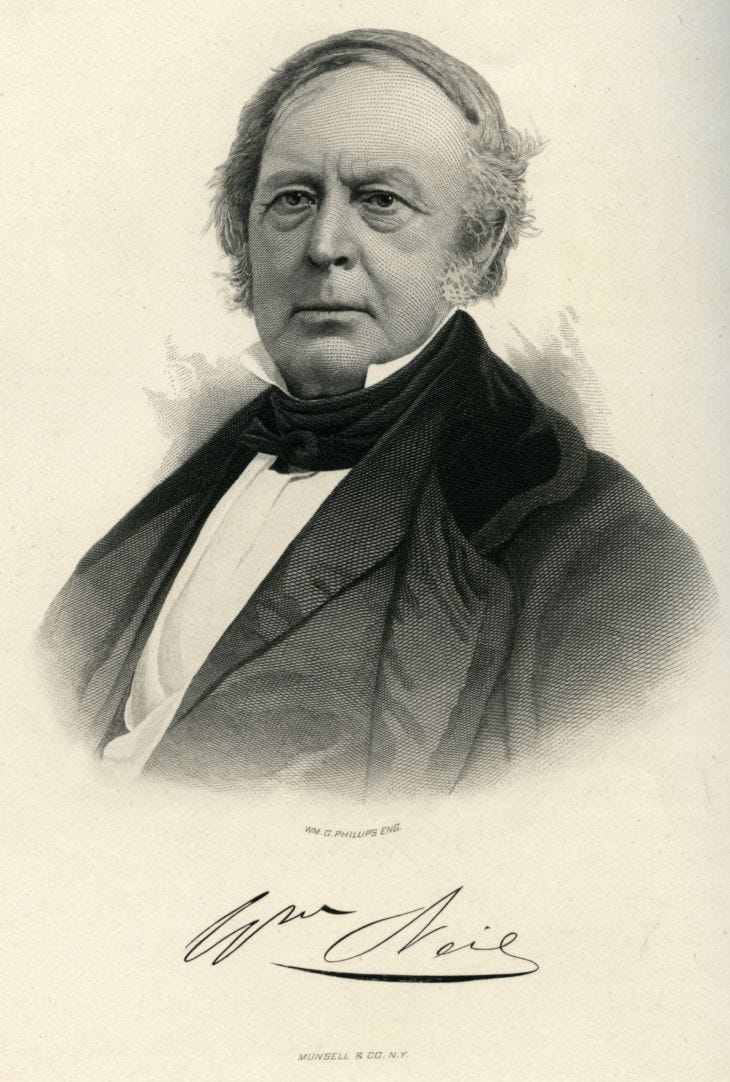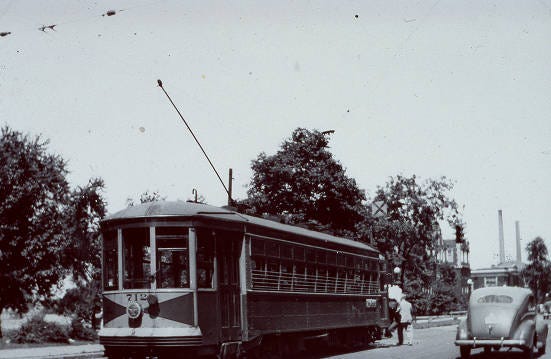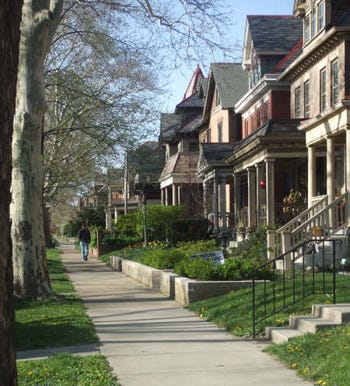A timeline of Neil Avenue
Looking back at the history of one of Columbus’ most famous streets
Neil Avenue is one of Columbus, Ohio’s most storied streets, embodying the city’s growth from its early years to its current status as a bustling urban center. From its origins as a prestigious residential street to its development as a cultural hub, Neil Avenue reflects the evolution of Columbus, influenced by the expansion of The Ohio State University and the historic preservation movement. Let’s take a look at the major changes that have shaped Neil Avenue over the years.
19th Century: Early Development and the Foundations of a Historic Street
Named after William Neil, a prominent Columbus businessman and "stagecoach king," Neil Avenue traces its roots to the late 19th century. Neil, who played a key role in Columbus’s early economy, owned vast tracts of land in the area, including the site that would later become OSU. When Neil donated part of his land to establish the university in 1870, it laid the foundation for the avenue’s growth and prominence.

As Columbus expanded in the late 1800s, Neil Avenue quickly became one of the city’s most desirable residential streets. Wealthy residents built large, elegant homes, many in the Victorian architectural style, establishing what is now known as Victorian Village. The street’s early charm and beauty attracted the city’s elite, creating a lasting legacy of architectural character.
Early 1900s: Streetcar Suburbs and Urban Expansion

The early 20th century brought the arrival of streetcar lines, a transformative innovation that reshaped Neil Avenue. Columbus’s burgeoning streetcar network encouraged residential growth along the avenue, as it became easy for residents to commute downtown for work while enjoying quieter, tree-lined streets. This “streetcar suburb” development helped Neil Avenue grow into a sought-after area for middle- and upper-class families. Victorian Village in particular flourished during this time, with more homes built in ornate, classic architectural styles that still define the area’s character.
This period saw Neil Avenue solidify its reputation as a bridge between the bustling urban core and tranquil suburban life, setting the stage for future changes as Columbus continued to grow.
Mid-20th Century: University Expansion and Subdivision of Historic Homes
In the years following World War II, Columbus experienced significant urbanization, which brought both opportunities and challenges for Neil Avenue. OSU’s expanding student population spurred demand for housing, leading to new developments near the university’s southern end. The influx of students and the popularity of car ownership also changed Neil Avenue’s residential character, with some historic homes converted into multifamily units or boarding houses. While Neil Avenue retained much of its Victorian charm, the historic homes faced new pressures, as urban renewal often prioritized new development over preservation.
The expansion of OSU’s campus also brought change. The northern sections of Neil Avenue, closest to OSU, began to cater to students and faculty, while the southern sections maintained a mix of traditional residences and small businesses. This period laid the groundwork for Neil Avenue’s dual identity as both a residential street and a university corridor.
1970s–1980s: The Historic Preservation Movement and Victorian Village Revival
By the 1970s, a nationwide interest in historic preservation had reached Columbus, sparking new appreciation for Neil Avenue’s Victorian architecture. Victorian Village became the focus of preservation efforts, as residents and city planners sought to protect the neighborhood’s unique architectural heritage. Establishing historic district status for Victorian Village helped safeguard many of Neil Avenue’s historic homes from demolition, preserving the neighborhood’s aesthetic and cultural significance.

The preservation movement revitalized Neil Avenue, as restored homes attracted new residents and increased property values. As historic buildings were saved, the character of Neil Avenue flourished, transforming it into a beloved part of Columbus’s architectural heritage. This renewed focus on preservation helped make Victorian Village a cherished neighborhood and elevated Neil Avenue as a landmark in Columbus’s history.
1990s–2000s: Campus Expansion and the Rise of the Short North
The 1990s and early 2000s marked another wave of change as OSU continued expanding its campus. With a growing student population, the university improved infrastructure along Neil Avenue, making it more pedestrian-friendly and enhancing its appeal to students and faculty. During this time, the neighborhood south of Victorian Village, known as the Short North, began its transformation into an arts and cultural district. Art galleries, restaurants, and boutiques sprang up, attracting visitors from all over Columbus and beyond.
The changes in the Short North influenced Neil Avenue, raising property values and spurring a new wave of revitalization. As Neil Avenue became a key corridor connecting OSU to the vibrant Short North, the avenue’s historic homes and local businesses attracted more attention, blending the historic charm of Victorian Village with the modern energy of the Short North.
2010s–Present: Mixed-Use Development and a Thriving Urban Landscape
In recent years, Neil Avenue has continued to evolve with Columbus’s urban growth, embracing a mix of historic preservation and modern development. As interest in urban living has increased, Neil Avenue has seen new mixed-use developments and high-end apartment complexes, catering to young professionals, students, and long-time residents alike. The Short North’s popularity has grown, and Neil Avenue now plays a central role in Columbus’s cultural scene, serving as a link between OSU, Victorian Village, and the Short North.
Today, Neil Avenue is both a historic street and a thriving urban corridor, balancing its 19th-century charm with 21st-century amenities. It remains a place where Victorian architecture stands alongside modern businesses, creating a unique community that celebrates Columbus’s past and future. Neil Avenue’s history is a testament to Columbus’s evolving identity, capturing the city’s transformation from a frontier town into a vibrant metropolis. With its rich architectural heritage and thriving community, Neil Avenue remains a vital part of Columbus’s story, blending the best of the past and the present.
Historic American Buildings Survey (HABS), Library of Congress





